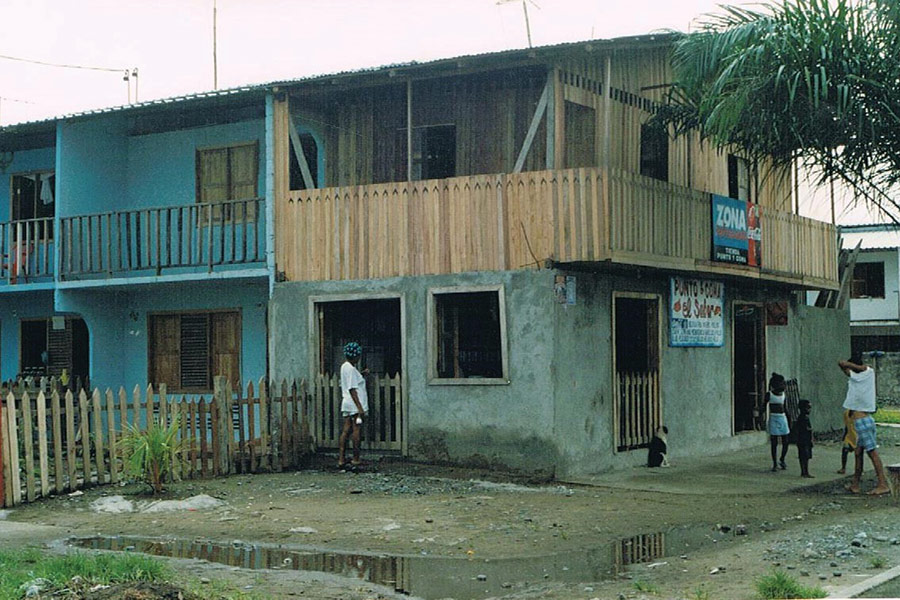
Building Together: Case Studies in Participatory Planning and Community Building
By Roger Katan with Ronald Shiffman
New Village Press, $19.95
Among the most overused and least understood words these days are “working with the community” and “community input.” Developers, designers, and planners bring a project to a community and then try to “work with” that community on its acceptance; they tinker somewhat in response to “public input.” But they come to “educate” the community, not to “be educated” by it, and fail to recognize that local wisdom trumps distant expertise more times than not. Missed is recognition that building on that local wisdom offers the best chance of project acceptance and success.
In Building Together: Case Studies in Participatory Planning and Community Building, designer Roger Katan and planner Ronald Shiffman illustrate the true meaning of collaborative design and planning through which the destiny of a community remains in local hands. Examples are offered with a great substantive and geographic range: a new multi-service center and renovating buildings to create a settlement house combined with elderly housing in East Harlem; a locally-conceived housing cluster in the Paris suburb of Meudon, France; accommodating the expansion of a local manufacturer without undermining its surrounding residential neighborhood in Greenpoint, Brooklyn; working with a self-help community of homeless people to develop self-built and self-managed housing in Pereira, Colombia. There are more, a diverse assortment, even a micro-credit union as a tool for neighborhood self-management in 1976 that evolved by 2012 into a national savings federation in Burkina Faso in West Africa.
|
|
None of these efforts are new, which means each story is revealed over time from creation to completion. But in one sense, they are timeless, all with relevance to the needs of diverse societies today. But one key to them all is what Shiffman calls “consistency over long periods of time. No one parachutes in and leaves.”
Katan and Shiffman followed different paths and came together in the 1960s, an interesting but challenging time. Moroccan-born, educated at the École des Beaux Arts and MIT, Katan had left a dream design job with the architectural firm of Louis Kahn in Philadelphia to live and work in East Harlem while teaching at Pratt Institute; Shiffman, Pratt-educated in architecture and planning, was then a graduate student hired to work for a unit at Pratt that was to morph into the Pratt Center for Community and Environmental Development inspired by the writing of Jane Jacobs. Shiffman had just been asked by Pratt to work with residents to develop a program to address urban decline in Bedford Stuyvesant; that work led to the establishment of the Bedford Stuyvesant Restoration Corporation, the first community-based development effort in the country. They worked together on some of the projects offered in the book, but mostly they were following parallel paths, admiring and learning from each other. These projects represent the early stirrings of what has become known as “advocacy planning.” They were young, somewhat idealistic, but with skills of great value to people who needed everything and not a clue where to begin, surely a circumstance true today. Young professionals, take note.
Nineteen-sixties urban renewal was at its height. Few were the Davids to this Goliath. Maybe Katan and Shiffman were too young to know better, but they forged ahead and, in the process, learned lessons worth absorbing today. Urban renewal may not be today’s Goliath, but surely high stakes, high impact development of all kinds is everywhere.
Some of the lessons offered here have been learned to some extent. More cross-disciplinary collaborative work is occurring; some silos are being penetrated. Indigenous building techniques from around the globe are gaining respect and new adherents. The public in some places is better educated about development, often eager to offer sophisticated alternatives to inappropriate plans. Local empowerment is not an alien concept. Professionals are learning to listen, really listen, to citizen voices making possible new and formidable partnerships. Equity and socially responsible design are not the foreign concepts they were in the 1960s, but are not as prevalent as they should be. The winds of change are out there bringing more of these ideas and practices to the forefront. A new generation seems poised to take up the challenge. For inspiration and some ideas for directions to follow, no better place to begin can be found than in the pages of this book.